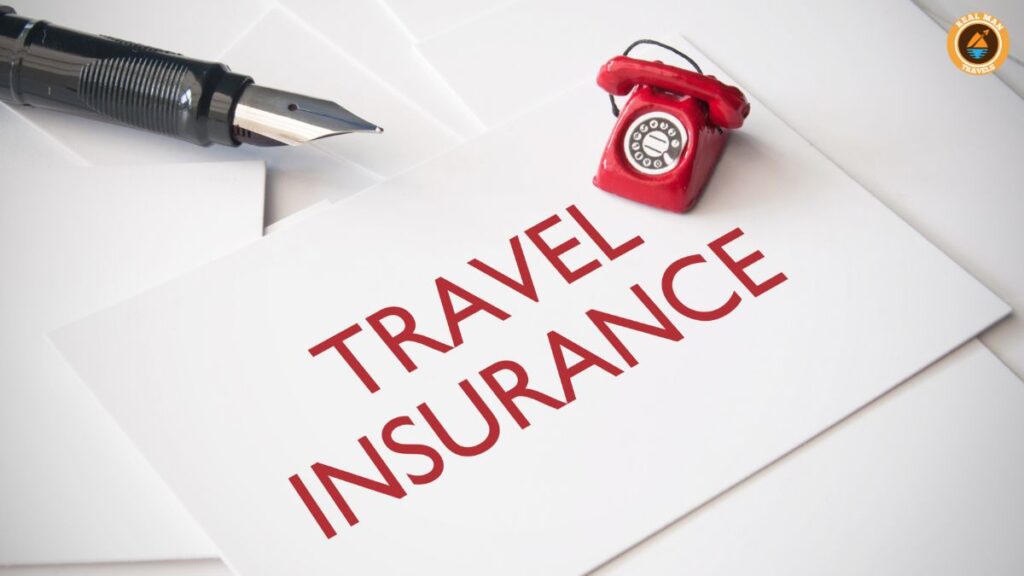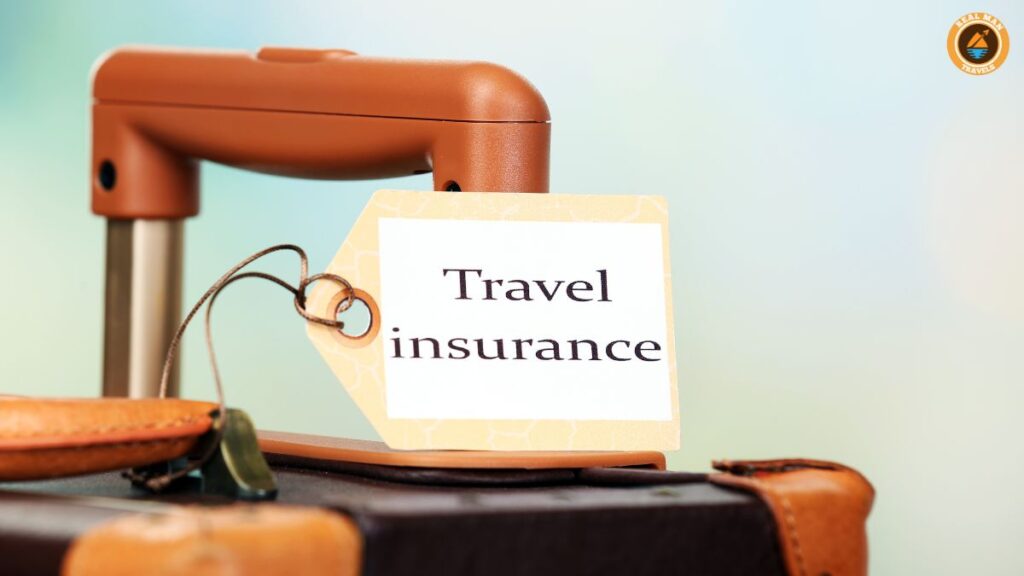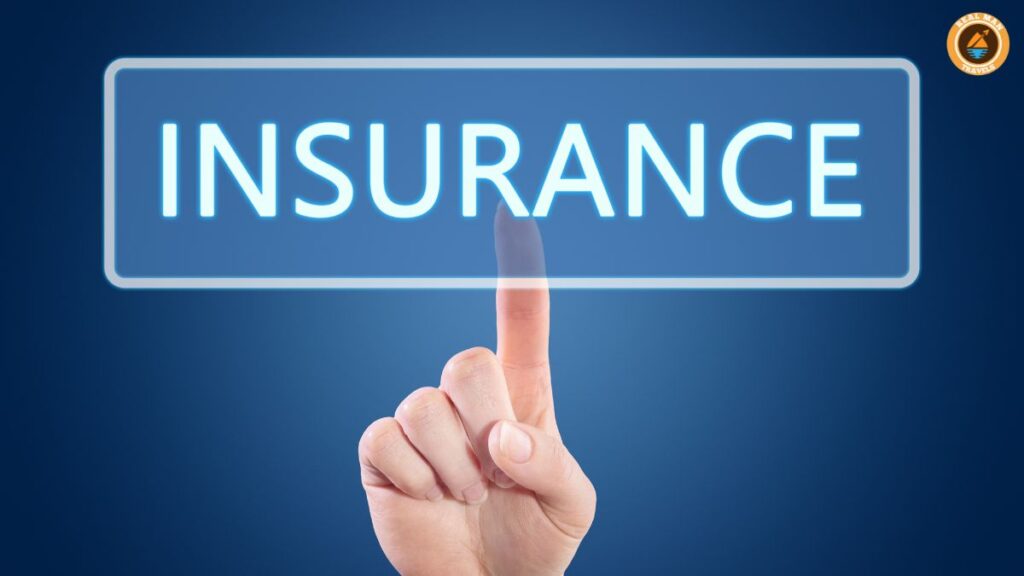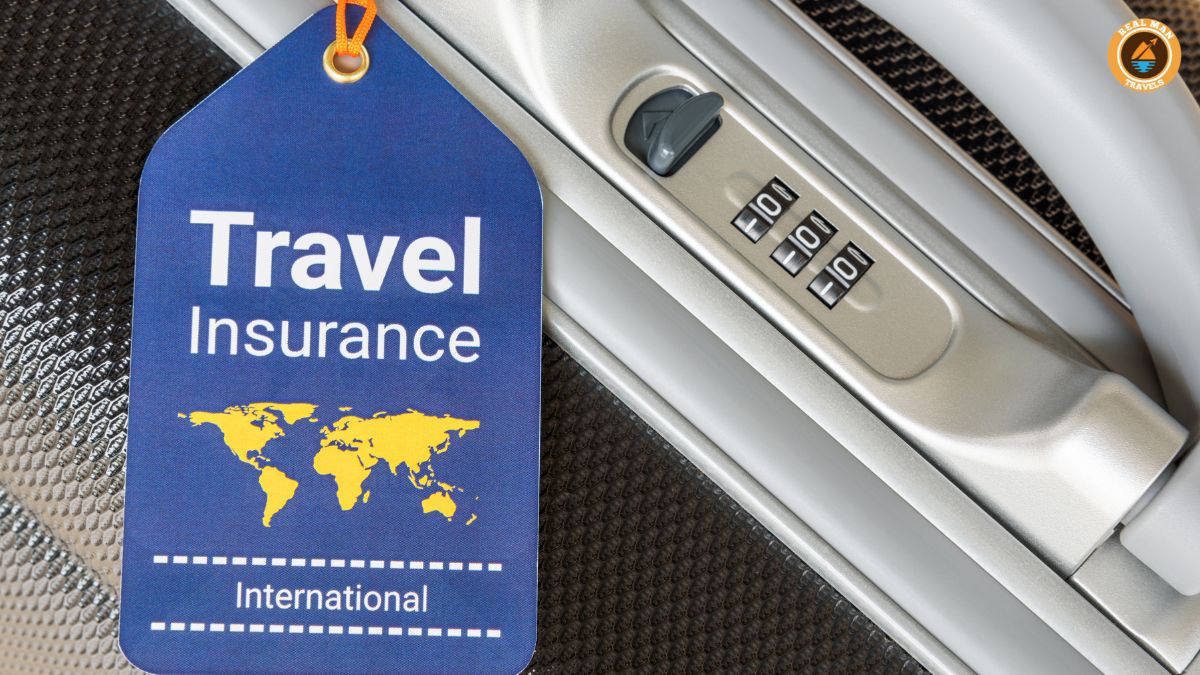Intro: Best Travel Insurance 2025
Best travel insurance 2025 embarking on a journey, whether to a remote continent or a nearby nation, is among life’s most significant sources of happiness. It represents a break from routine, a chance for discovery, and an opportunity to create lasting memories. The nature of travel is inherently unpredictable, where unexpected events can disrupt even the most thoroughly laid plans. An unexpected disease, a lost passport, or a canceled flight can quickly turn a dream holiday into a harrowing ordeal. This is where a robust travel insurance plan serves as your essential safety net, providing financial protection and peace of mind.

Browsing the world of travel insurance can feel frustrating. We will break down what travel insurance covers, explain the different types of policies, and guide you through a step-by-step process for selecting the best travel insurance for your specific needs.
What is Travel Insurance and Why Do You Need It?
At its core, travel insurance is a type of coverage designed to protect you from the financial risks and losses that can occur while traveling. These losses can be minor, such as a postponed trip or a lost travel suitcase, or significant, like a medical emergency requiring hospitalization abroad. Believe in it as a temporary guard versus the “what ifs” of travel.
They may rely on credit card benefits or presume their domestic health insurance coverage will cover them. Credit card benefits are typically restricted and may not cover significant medical occasions or journey cancellations for all reasons.
In 2025, the need for comprehensive travel insurance is more noticeable than ever. The travel industry continues to deal with volatility, with flight schedules subject to change and new health advisories emerging. A firm policy is not a high-end; it’s a fundamental part of accountable travel planning.
Key Benefits of Securing Travel Insurance
- Financial Protection: It repays you for non-refundable trip expenses if you need to cancel for a covered reason.
- Medical Safety: It covers emergency dental and medical expenditures, which can be huge in some nations.
- Emergency Assistance: Provides 24/7 support for medical recommendations, lost file help, and emergency travel plans.
- Peace of Mind: Allows you to relax and enjoy your journey, understanding you are protected against a large variety of possible incidents.
Deconstructing Travel Insurance Policies: Core Coverage Areas
To discover the very best travel insurance coverage, you must initially understand the parts that make up a policy. While plans vary, many extensive policies are developed around a couple of crucial pillars of protection.
1. Trip Cancellation, Interruption, and Delay Insurance
This is often the primary reason people purchase travel insurance. It protects the financial investment you’ve made in your trip.
- Trip Cancellation: This protection reimburses your pre-paid, non-refundable travel expenses if you need to cancel your journey before you depart for a reason covered by your policy. Typically, covered reasons include the unexpected disease or death of the tourist, a close household member, or a traveling companion; severe weather conditions that cause a cessation of services; or a legal obligation, such as jury duty.
- Trip Interruption: This is used after your journey has actually begun. If you have to cut your trip short and return home due to a covered factor, you will be reimbursed for the unused portion of your journey. It likewise typically covers the extra transportation costs you incur to get back home.
- Trip Delay: If your flight or other typical provider is postponed for a specified variety of hours (e.g., 6 or 12 hours) due to a covered reason, this advantage can compensate you for required expenses like meals, lodging, and transport.
2. Emergency Medical and Dental Coverage
This is probably the most vital part of any travel insurance coverage, specifically for worldwide travel. Your domestic medical insurance plan most likely provides little to no protection abroad. An accident or sudden health problem in a foreign nation could lead to crippling medical bills.
- Emergency Medical Expense Coverage: This covers the costs of medical treatment for an illness or injury that occurs throughout your journey. This can include physician services, health center fees, ambulance services, and prescription medications. Pay attention to the coverage limit, as you want a sufficiently high amount to cover a serious incident. Experts often advise a minimum of $100,000 for worldwide travel.
- Emergency Dental Coverage: This supplies coverage for intense dental emergencies, such as a severe infection or a broken tooth. It is typically for immediate discomfort relief and not for regular oral work.
3. Emergency Situation Medical Evacuation and Repatriation
This coverage is often bundled with emergency medical coverage, but it is distinct and equally crucial.

- Emergency Medical Evacuation: This covers the cost of transporting you to the nearest sufficient medical center if your existing location can not offer the necessary level of care. In remote locations or areas with substandard healthcare, this may suggest being airlifted to a nearby city or even a neighboring country. These costs can quickly reach the tens or hundreds of thousands of dollars.
- Repatriation of Remains: In the unfortunate event of a death during a trip, this advantage covers the expense of returning the deceased’s remains to their home nation.
4. Luggage and Personal Effects Coverage
While less critical than medical coverage, losing your luggage can be a significant hassle and expenditure.
- Baggage Loss/Damage: This reimburses you for the loss, theft, or damage of your baggage and personal items during your journey. There is usually a per-item limitation and a total maximum limit. It’s essential to have documentation for high-value items.
- Baggage Delay: If the airline company postpones your inspected baggage for a given duration (e.g., 12 or 24 hours), this coverage supplies reimbursement for the purchase of essential items like clothes and toiletries till your bags arrive.
5. Accidental Death & Dismemberment (AD&D).
If you suffer a fatal mishap or one that results in the loss of a limb or vision while taking a trip, this benefit offers a lump-sum payment to you or your recipient. It’s a kind of life insurance specific to your journey.
Kinds Of Travel Insurance Policies for 2025.
Understanding the different policy structures will help you select the one that aligns with your travel design.
Single-Trip Plans.
This is the most common type of policy. It supplies coverage for a single, particular trip with specified departure and return dates. It’s ideal for people who take one or two huge journeys a year. The cost is based on the tourist’s age, the duration of the journey, the destination, and the total cost of the journey.
Annual/ Multi-Trip Plans.
This policy covers all your trips throughout that year, though there is typically a maximum duration for any single journey (e.g., 30, 45, or 90 days). If you plan to take more than two or three trips per year, an annual strategy is almost always more affordable than purchasing multiple single-trip policies.
Group Travel Insurance.
Designed for groups of 10 or more individuals traveling together, these plans provide the same types of protection as individual strategies but are streamlined under a single policy. This can streamline administration and sometimes offer a per-person discount.
Specialized Coverage Plans.
Some strategies accommodate particular requirements:.
- Adventure Travel Insurance: Standard policies often omit “dangerous” activities like rock climbing, diving, or heli-skiing. If your trip includes extreme sports, you’ll need a specialized plan or an optional rider that clearly covers these activities.
- Cruise Insurance: Cruises have distinct threats, such as missing a port departure or schedule modifications due to weather. Cruise-specific strategies typically include higher coverage limits and advantages tailored to these situations, such as “missed out on connection” coverage.
- Medical-Only Plans: If you are not worried about canceling your trip and have refundable bookings, a travel medical strategy can be a cost-effective method to protect high-limit emergency health and evacuation protection.
The Power of “Cancel For Any Reason” (CFAR) Coverage.
One of the most important, yet misunderstood, add-ons is “Cancel For Any Reason” (CFAR) coverage. The requirement trip cancellation compensates you for a list of defined, covered reasons. CFAR offers a significant upgrade in flexibility.
With CFAR, you can cancel your journey for literally any reason — fear of travel, a work dispute, or simply changing your mind — and still recover a substantial part of your non-refundable journey costs.
- It is an optional upgrade that is added to the policy premium, typically increasing the expense by 40-60%.
- It usually compensates 50% to 75% of your trip expenses, not 100%.
- You should buy CFAR within a specific timeframe after your initial trip deposit, generally within 10 to 21 days.
- To make a claim, you typically should cancel your trip at least 48 hours before your scheduled departure.
For tourists booking pricey, intricate journeys far in advance, or for those who desire the supreme level of flexibility in uncertain times, CFAR coverage is a vital financial investment.
How to Choose the Best Travel Insurance: A Step-by-Step Guide.
Now that you understand the structure blocks, let’s walk through the process of selecting and purchasing the best policy for your 2025 travels.
Action 1: Assess Your Trip and Personal Needs.
The “best” insurance coverage is not one-size-fits-all. It depends entirely on you and your trip. Ask yourself these questions:.
- Where are you going? Traveling to the United States, for instance, requires higher medical limits due to the country’s high healthcare expenses. A trip to a remote area in Southeast Asia requires outstanding medical evacuation protection.
- How long is your trip? The longer the trip, the more exposure you need to possible issues.
- What is the total non-refundable expense of your journey? Build up flights, hotels, trips, and cruises that you would lose if you needed to cancel. This quantity determines the level of trip cancellation protection you need.
- What are you preparing to do? If your travel plan includes snowboarding, diving, or hiking in the mountains, you need to ensure that these activities are covered.
- Who are you traveling with? Think about the health and age of all tourists. Robust medical coverage is essential when traveling with young children or elderly parents.
- Do you have any pre-existing medical conditions? This is an essential element. You will need a policy with a “pre-existing medical condition exclusion waiver.”.
Step 2: Understand the Pre-Existing Condition Waiver.
This is a vital benefit for a vast variety of travelers. A standard policy will not cover claims related to a pre-existing medical condition. A pre-existing condition is frequently specified as any disease or injury for which you received treatment, suggestions, or a modification in prescription within a “look-back period” of 60 to 180 days before acquiring the policy.

Nevertheless, you can get protection for these conditions by getting a pre-existing medical condition exclusion waiver. To receive this waiver, you typically must:.
- Be clinically steady when you buy the policy.
- Purchase your policy within a set time (typically 14-21 days) of making your initial trip payment.
- Guarantee the complete non-refundable cost of your trip.
This waiver can be the difference between a covered medical emergency and a rejected claim costing thousands of dollars.
Action 3: Use a Comparison Website.
The most efficient method for buying travel insurance is to use an online comparison engine. These sites allow you to enter your journey information and get quotes from various credible insurance coverage providers. This will enable you to compare coverage levels and costs side by side.
Benefits of Using a Comparison Website:
- Transparency: Easily compare advantages like medical limitations, evacuation amounts, and luggage protection.
- Efficiency: Get dozens of quotes in minutes rather than going to each insurer’s site separately.
- Filter Options: Sort strategies by rate, coverage ratings, or particular advantages like CFAR.
- Customer Reviews: Read reviews from other travelers about their experiences with various business and their claims processes.
When comparing, consider not just the price. A low-cost strategy with limited protection might not be the best choice. Concentrate on the plan that offers the best level of defense for your particular trip.
Step 4: Read the Policy Details Carefully.
Before you click “buy,” review the policy document, often referred to as the Certificate of Insurance or Policy Wording. This is the legal contract that details precisely what is and is not covered. Pay unique attention to:.
- Coverage Limits: The maximum dollar amount the policy will spend for each benefit.
- Exclusions: The list of products and situations not covered by the policy. Common exemptions include incidents associated with drug or alcohol abuse, high-risk sports (unless you have a rider), and travel to countries with federal government advisories.
- Definitions: How the policy defines terms like “household member,” “pre-existing condition,” and “medically required.”.
Checking out the fine print can be boring, but it is the only way to truly understand the protection you are acquiring.
Step 5: Purchase and Document Your Policy.
Once you have chosen a plan, purchase it and ensure that you receive the policy files via email. Save a digital copy to your phone, cloud storage (like Google Drive or Dropbox), and email it to yourself and a reliable contact back home. It’s likewise wise to print a physical copy to carry with you.
Your paperwork should include the policy number and the 24/7 emergency assistance contact number. In a crisis, you won’t want to be searching through emails to find these essential details.
Comparing Travel Insurance Providers for 2025.
While we cannot suggest a single “best” supplier, several businesses consistently receive high marks for their comprehensive strategies, customer care, and trustworthy claims processing. When you use a contrast tool, you will likely see plans from reliable insurance companies such as:.

- World Nomads.
- Travelex.
- Allianz Travel.
- AXA Assistance USA.
- Seven Corners.
- IMG.
- Tin Leg.
Each company uses a range of strategies targeting different types of travelers, from budget-conscious backpackers to luxury cruisers. Your job is to compare their particular offerings for your trip to discover the best match.
Frequently Asked Questions (FAQ) About Travel Insurance.
Q1: When is the best time to purchase travel insurance?
The very best time to purchase travel insurance coverage is right away after making your first non-refundable payment for your trip (like scheduling a flight or hotel). This is because time-sensitive advantages, such as the pre-existing condition waiver and CFAR protection, need you to acquire your policy within a narrow window (typically 10-21 days) of your initial deposit.
Q2: How much does travel insurance typically cost?
Travel insurance expense usually varies from 4% to 10% of your overall non-refundable trip cost. The precise rate depends on several factors: your age, the duration of your journey, your destination, the total price you are insuring, and the level of coverage you select. Older travelers and more pricey trips will have higher premiums.
Q3: Will the trip insurance cover cancellations due to COVID-19?
It depends. If you have contracted COVID-19 before or during your journey and have a medical professional’s diagnosis, the majority of standard policies will treat it like any other illness. This would enable you to cancel or disrupt your journey and make a medical claim. Nevertheless, fear of contracting COVID-19 or cancellations due to government travel bans are usually not covered by basic policies. For that kind of flexibility, you would need to buy a “Cancel For Any Reason” (CFAR) add-on.
Q4: Is travel insurance coverage worth it for a domestic trip?
While your domestic health insurance coverage will be adequate within your home nation, it will not cover non-refundable expenses if you have to cancel your journey. It also covers baggage loss and journey hold-ups, which are typical issues in domestic travel.
Q5: What’s the distinction between travel insurance and credit card travel advantages?
Charge card travel benefits are a nice perk, but they are not a substitute for an extensive travel insurance plan. Credit card coverage is typically secondary, meaning you must file a claim with your primary insurance first. The coverage limits usually are much lower, specifically for medical evacuation. Moreover, trip cancellation coverage on a charge card often has a far more restrictive list of covered reasons than a dedicated insurance policy. Read your card’s benefits regularly to understand its limitations.
Q6: How do I submit a travel insurance coverage claim?
Initially, contact your travel insurance coverage provider’s 24/7 support line as soon as a problem happens. They can guide you on the following actions. To submit a claim, you will need to submit a claim form in addition to comprehensive documentation. This includes invoices, medical professionals’ reports, authorities’ reports (in the event of theft), communication from airlines, and any other evidence of your loss. It is essential to maintain comprehensive records of all aspects related to the event.
Your Final Pre-Travel Checklist.
Choosing the ideal travel insurance coverage is a crucial step in preparing for any trip. It transforms your journey from a confident endeavor into a safe and secure adventure. By understanding the core components of a policy, examining your unique travel requirements, and diligently comparing your options, you can find a plan that provides robust protection without overpaying.
In 2025, let your journeys be defined by connection, pleasure, and discovery —not by concern. A well-chosen travel insurance plan is the silent, unfaltering companion that makes this possible, ensuring that no matter what happens on the road, you are never genuinely alone. Travel safely, travel carefully, and travel with self-confidence.
We will break down what travel insurance covers, explain the different types of policies, and guide you through a step-by-step process for selecting the best travel insurance for your specific needs. At its core, travel insurance is a type of protection designed to protect you from the financial risks and losses that can occur while traveling. Travel insurance coverage cost usually ranges from 4% to 10% of your overall non-refundable trip cost. Credit card travel advantages are a good perk; however, they are not a replacement for an extensive travel insurance policy. Travel safely, travel carefully, and travel with confidence.


1 thought on “Ultimate Guide to Finding the Best Travel Insurance 2025”